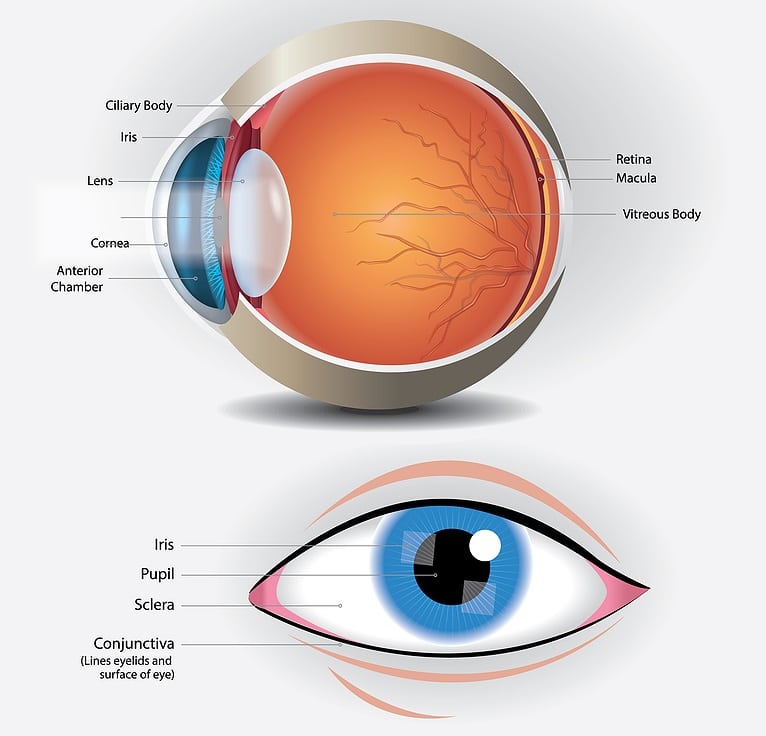It might be small in size, but the human eye is a powerful organ. In fact, it can process about 36,000 pieces of information every hour. Each component plays a specific role, yet works together with the other parts of the eye.
One part of the eye, the cornea, has an especially important job. It provides up to 75% of the eye’s focusing power! It’s the cornea that determines how light rays are directed to your lens, and then the lens further focuses that light onto your retina. The light receptors on your retina turn that light into an image for your brain to see. It’s quite a system!
The cornea also provides protection to the rest of the eye and plays a critical role in visual clarity. Let’s look closer at this mighty tissue.
What is the cornea?
The cornea is the clear, dome-shaped part of the front of the eyeball. It works like a magnifying glass. It controls and focuses the light that enters it. As the outermost layer of the eye, the cornea has another job as well. It helps to protect the rest of the eye from dust and germs and other harmful particles.
Its five layers are made up of cells and proteins. Unlike other tissues in the body, the cornea is unique in that it contains no blood vessels to nourish it. This is because it needs to remain transparent for light to enter. So, the cornea receives its nourishment from tears and aqueous humor, a fluid produced by the eye.
What does the cornea do?
When light enters the eye, the cornea refracts, or bends, the light as it enters the eye. That light passes freely through the pupil, the opening in the center of the iris, the colored part of the eye. Once light passes through the pupil, it reaches the lens of the eye, a clear flexible structure that works a bit like the lens of a camera, shortening and lengthening light rays to focus them on the retina to form an image. The cornea provides most of the focusing power of the eye and the lens provides the rest. Together, they help determine how well we see.
How does the shape of the cornea affect vision?
The ideal cornea shape is like a dome and symmetrical on all sides. But what happens when it slopes more in one area than another? When the shape of cornea is not symmetrical, light rays enter the eye at different angles. Then, when that light enters the lens at different angles, it is not properly focused onto the retina, which can result in a blurry or distorted image.
A curvature of the cornea that is non-symmetrical may be caused by a previous surgery performed on the cornea (such as LASIK or radial keratotomy), an underlying condition (such as keratoconus), or from trauma to the eye. This can be described as a “complex cornea.” Having a complex cornea is more common than you might think.
For those with cataracts, the selection of an intraocular lens, the artificial lens that replaces the eye’s cloudy natural lens, depends on many factors. One factor a doctor will evaluate is the shape of the cornea and how its complexity may affect the outcome of surgery.
References and more information:
http://www.kumc.edu/Documents/ophthalmology/Cornea%20Structure%20Layers%20and%20Function%20web.pdf
https://www.allaboutvision.com/resources/cornea.htm



